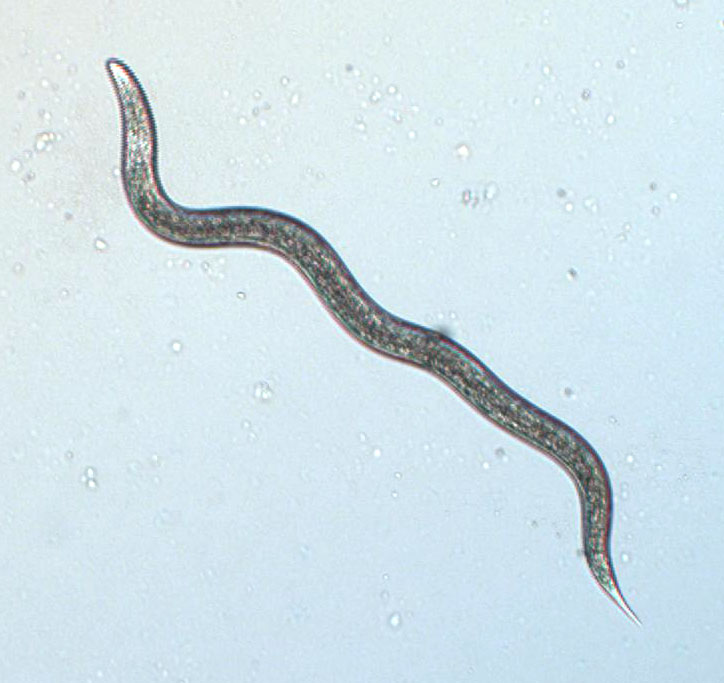J.A. Morales-Ramos1, M. G. Rojas1 and D. I. Shapiro-Ilan2
1USDA ARS SEA Biological Control of Pests Research Unit, Stoneville, MS
2USDA ARS SEA SE Fruit and Tree Nut Research Unit, Byron, GA
Entomopathogenic nematodes are produced in two ways: in artificial media using liquid or solid fermentation methods (in vitro) or by mass producing insect hosts to be artificially exposed to mass infection by nematodes (in vivo). Producing nematodes in vitro requires highly sophisticated equipment, which is often too expensive for farmers or small biocontrol producing companies. In addition only a relatively small number of nematode species have been produced in vitro. On the other hand, producing nematodes in vivo can be complicated by the need to produce insect hosts in mass quantities inexpensively and consistently. Historically, the insect of choice to produce nematodes in vivo has been the greater wax moth (Galleria mellonella). Producing the greater wax moth in mass has many complications including the production of cocoons and the extreme fragility of nematode-infected larvae.

The yellow mealworm (Tenebrio molitor) is an alternative host for in vivo nematode production, which does not produce cocoons and retains structural integrity while infected by nematodes. Mealworms have the additional advantage of being produced commercially in large quantities in many countries around the world. Scientists of the U.S. Department of Agriculture, Agricultural Research Service have developed improved systems to rear, separate, infect, and pack mealworm for production and distribution of entomopathogenic nematodes. The structural integrity of nematode-infected mealworm cadavers has enabled the development of mechanized methods for packing, thereby reducing labor costs. Technologies developed by ARS have been implemented in a small company in the U.S. Nematodes produced in vivo using these technologies have been proven effective against the citrus weevil (Diaprepes abbreviatus) and the small hive beetle (Aethina tumida) and may be effective against other important insect pests.
Methods to produce mealworms in mass do not require the use of sophisticated technology and can be implemented in less industrialized countries. Production of biological control agents can be difficult in countries where access to technology is limited. This reduces opportunities for application of biological control strategies in developing countries. Technologies developed by ARS scientists for production of nematodes using mealworms have the potential to be implemented in such countries.
Dr Juan A. Morales- Ramos
USDA ARS SEA BCPRU
Stoneville, MS 38776
Phone: 662-686-3069
Email: Juan.MoralesRamos@ars.usda.gov
Additional resources:
http://www.ars.usda.gov/main/main.htm
http://www.biocontrol.entomology.cornell.edu/index.php








